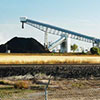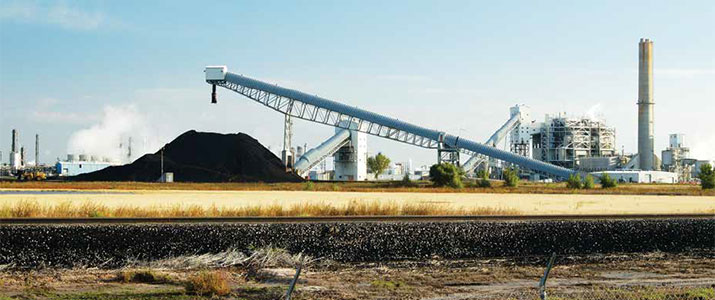
Drilling for Opportunity
Video surveillance professionals capitalizing on America’s emerging energy boom
- By Anthony Incorvati
- Jul 01, 2014
 If you think the U.S. energy market is huge today,
you haven’t seen anything yet. The International
Energy Agency predicts that America
will overtake Saudi Arabia as the world’s leading
oil producer by 2017 and be a net oil exporter
by 2030. That’s quite a turnaround considering
that just a few years ago, Saudi Arabia was expected
to lead production until 2035.
If you think the U.S. energy market is huge today,
you haven’t seen anything yet. The International
Energy Agency predicts that America
will overtake Saudi Arabia as the world’s leading
oil producer by 2017 and be a net oil exporter
by 2030. That’s quite a turnaround considering
that just a few years ago, Saudi Arabia was expected
to lead production until 2035.
Increased oil, and especially natural gas production,
plus a growing demand for energy worldwide are
leading to a boom in non-renewable energy infrastructure
in the United States. This, in turn, is giving rise
to a host of opportunities for security professionals
to protect the complex network of energy-gathering
equipment, pipelines, storage facilities and refining
plants that fuel our country’s economic engine.
Whether unlocking new oil and gas reserves from
the mid-Atlantic’s Marcellus Shale, drilling for resources
offshore or mining for coal, every energy sector
faces similar challenges: theft, equipment breakdown
and hostile activity. The beauty of network
video is that it affords plant operators the ability to integrate
security, safety and production control into a
single, overarching system of protection. In addition
to surveillance, cameras can assist in visually verifying
access control throughout a property, aid in eliminating
responses to false intrusion detection alarms and
even help in monitoring plant production processes.
And, because they’re connected to the network, these
cameras can be managed from remote sites, multiple
locations and/or one centrally-located control room.
A Three-pronged Strategy for
Protecting Critical Infrastructure
Regardless of what other technologies are being used,
network cameras should always be integral components
in the planning and designing of surveillance
and protection measures for critical infrastructure.
Cameras provide intelligent situational awareness that
can greatly help security managers address their most
primary concerns: protecting long perimeters and
poorly-lit expanses, monitoring site entrances and exits,
and safeguarding potentially hazardous areas. It
is these risk points that often lead to interrupted production,
loss of revenue and sometimes costly repairs.
As a security professional, you need to take a
layered approach to your solution design. Think of
protection as a series of concentric circles: first, the
perimeter; next, the buildings; and finally, the energy
production itself. Let’s examine these possibilities one
at a time.
Perimeter protection. There are a number of perimeter
protection technologies available to detect an
intruder—everything from microwaves, fiber-fence sensors and seismic sensors to radar alerts. Combining network cameras with these
and other technologies adds another level of situational awareness to the triggered
event. With intelligent eyes on the scene, plant operators can observe who or what
is trespassing, while also ascertaining what kind of activity is taking place.
For instance, as a first-line of defense, you can install network thermal cameras
equipped with intelligent video analytics to detect intruders. Detection could
trigger an alarm that would direct an HDTV-quality, PTZ, dome camera to the
location which would, in turn, stream high-definition images to the plant operator
and provide sufficient details of the intruder to enable identification. This is an
especially effective combination for protecting the most vulnerable segments of the
distribution system, such as pipelines transporting gas from remote exploration
sites across vast, unpopulated areas.
In such locations, cameras would employ wireless connectivity to the network
so that security staff and company managers could monitor those sites remotely.
Onboard image processing enables thermal cameras to detect the presence of unauthorized
persons anywhere across the entire visible field of view. Thermal camera
algorithms are smart enough to discount environmental disturbances like rain,
fog, sun and foliage. In certain conditions, they may even be able to distinguish
between the heat signature of a small animal and that of a person. This information
is crucial when verifying alerts from an alarm system. Was it an animal or
leaves blowing across the sensors, or was someone actually trying to sabotage the
installation? Knowing which will dictate what action to take and who to send out.
The operator may simply log the incident as a non-event, send a guard or local law
enforcement to investigate or call in the fire department. Having the mechanism in
play to avoid responding to false alarms can ultimately be a real cost saver.
As a further precaution, and to ensure continuous recording even in the event
of a network disconnect, the network camera can be equipped with an onboard
SD card for failover recording. Once network connectivity is re-established, any
recordings on the memory card can be streamed to the control center for review.
Building protection. Alongside perimeter access, it also is important to control
access and flow within critical areas. Especially during emergency evacuations, facilities
managers need to be able to monitor exits to ensure nobody is left inside
during a potentially dangerous situation. Linking network video to a facility’s access
control system can expedite verification by giving management instant access
to live, recorded video and audio throughout the property as well as other pertinent
scene data.
Network cameras equipped with wide dynamic range and other lowlight-sensitivity
features can provide plant managers with high-quality scene details, even
if the only illuminations available are emergency exit lights. Network cameras
equipped with two-way audio can be integrated with access control systems to
double as intercoms, augment virtual gates and virtual fences, count people coming
in and out of the facility, and even detect and record audio events outside the
camera’s field of view.
In cases of challenging environmental factors—such as fog, smoke, deeply
shadowed areas or blinding mounds of snow—heat signatures, captured by
thermal cameras, can extend situational awareness provided by more traditional
video cameras.
Production protection. While protecting people and property are essential to a
robust, energy-driven economy, the third leg of opportunity arises from monitoring
production processes, ensuring safety rules are being followed and seeing that
tools and equipment are being managed properly.
Intelligent cameras can augment human oversight in sensitive areas by providing
a mechanism for visual inspections, remote assistance with planned maintenance
and support for other day-to-day operations. In this way, an energy company can maintain efficient, high production levels without compromising plant safety.
They can use network-based video
cameras to keep close watch over multiple
locations simultaneously, without
a physical presence onsite.
Adhering to an open standards
platform is essential to successfully integrating
and managing network video
with production components, devices
and software. Ultimately, it’s a strategy
that yields significant payoffs. For
instance, when you integrate SCADA
systems with network video, plant
managers can acquire information on
temperature, pressure and speed meters
in real time. With visual confirmation,
operators can instantly spot changes
in production sensors and take corrective
action before problems escalate,
possibly forcing a temporary production
shutdown.Whether monitoring a
pumping station or a hydraulic fracturing
drill, live images often provide a
quicker snapshot of a situation than a
string of numbers.
An Energetic Approach to a
Surveillance Opportunity
Network cameras that leverage existing
IP infrastructure make any installation
more reliable, scalable and future proof.
Based on open standards, these cameras
can be easily enhanced with sophisticated
analytics to create the most advanced
solution for both security and
productivity.
Being network based, they expand
accessibility to eyes on the scene, enabling
companies to manage the entire
security system from multiple remote
sites: company headquarters, individual
plant security offices and on mobile
devices while on patrol. Plant operators
can even grant access to live and recorded
video to first responders such as
local police, fire departments and government
agencies tasked with securing
the vital U.S. energy infrastructure. In
essence, it allows all these parties to be
virtually present anywhere in a facility
and work in tandem to provide the best
possible protection against theft, equipment
breakdown and hostile activity.
With the resurgence of oil exploration
and natural gas production fueling
America’s economy, it’s an opportune
time for security professionals to address
the country’s growing target of
energy gathering sites, pipelines and
freight transport, storage facilities and
refining plants. Optimizing surveillance
solutions to protect this sector contributes
to our economic prosperity, our
national security and our world leadership
in energy production.
This article originally appeared in the July 2014 issue of Security Today.